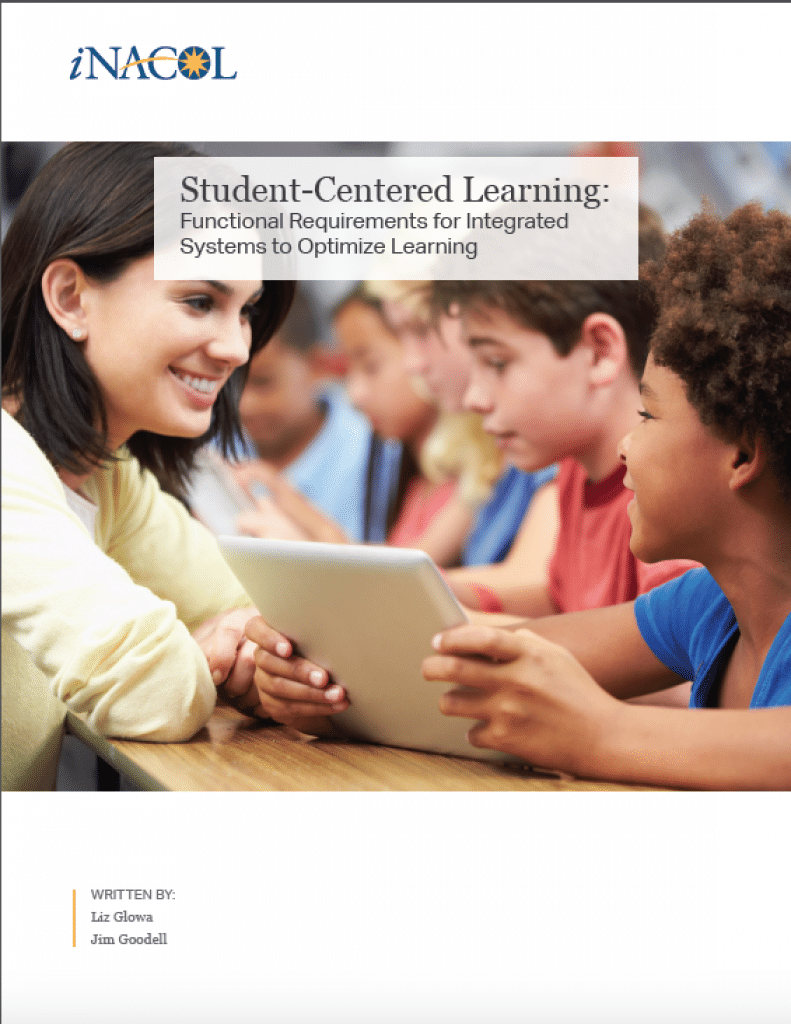Report
Student-Centered Learning: Functional Requirements for Integrated Systems to Optimize Learning

Learn more about this research in our archived webinar on this report.
This paper illustrates the technical requirements and functionalities that learning management systems need to shift toward student-centered instructional models. This comprehensive framework will help districts and schools determine what systems to use and integrate as they being their journey toward student-centered learning, as well as how systems integration aligns with their organizational vision, educational goals and strategic plans.
Educators can use this report to optimize student learning and promote innovation in their own student-centered learning environments. The report will help school leaders understand the complex technologies needed to optimize personalized learning and how to use data and analytics to improve practices, and can assist technology leaders in re-engineering systems to support the key nuances of student-centered learning.
The realities of the 21st-century learner require that schools and educators fundamentally change their practice. “Educators must produce college- and career-ready graduates that reflect the future these students will face. And, they must facilitate learning through means that align with the defining attributes of this generation of learners.”
Today, we know more than ever about how students learn, acknowledging that the process isn’t the same for every student and doesn’t remain the same for each individual, depending upon maturation and the content being learned. We know that students want to progress at a pace that allows them to master new concepts and skills, to access a variety of resources, to receive timely feedback on their progress, to demonstrate their knowledge in multiple ways and to get direction, support and feedback from—as well as collaborate with—experts, teachers, tutors and other students.
The result is a growing demand for student-centered, transformative digital learning using competency education as an underpinning.
Download the Executive Summary here.